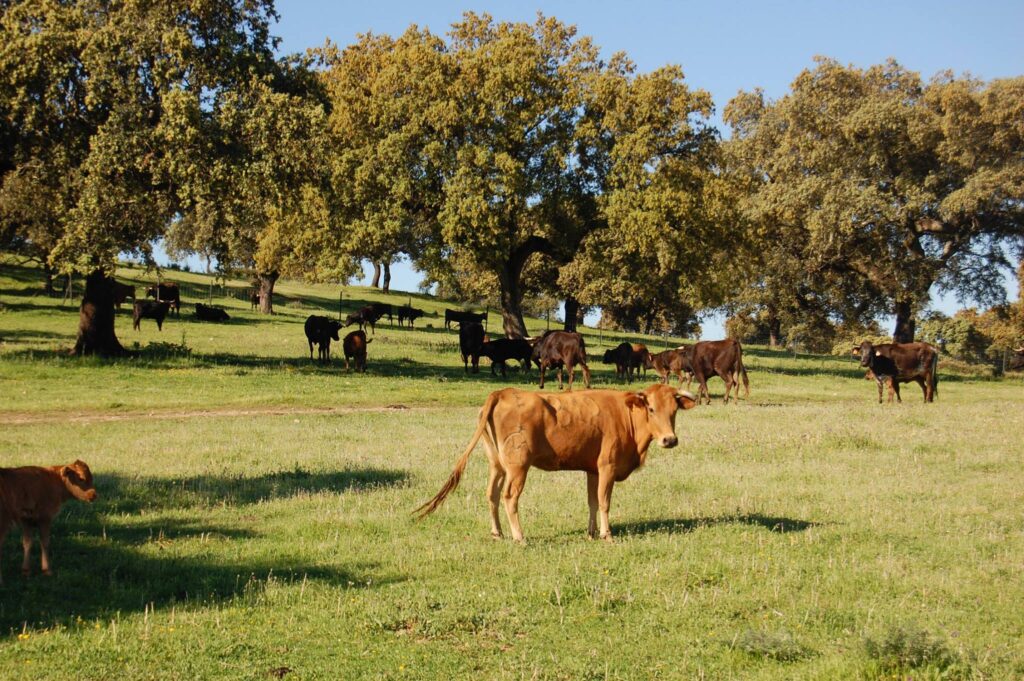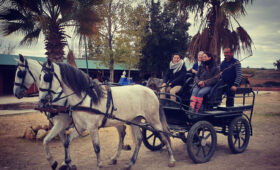Si te gusta el mundo del toro bravo y montas a caballo en un nivel medio, dominando paso, trote y galope, puedes vivir una experiencia única como es montar a caballo en el medio natural del toro bravo, una dehesa enclavada en Sierra Morena de singular belleza perteneciente a una conocida ganadería de toros bravos.
Durante dos horas aproximadamente recorrerás montando a caballo junto al ganadero. los diferentes cercados de la finca, donde pastan por separado las vacas nodrizas con sus crías, los machos jóvenes, los novillos y los toros de salida.



How to Get More Results Out of Your Travel Dairies?
Luxury may be an element, as in early 20th century African safaris, but including accommodations in fully equipped fixed structures such as high-end sporting camps under the banner of “camping” blurs the line.
Camping as a recreational activity became popular among elites in the early 20th century. With time, it grew more democratic, and varied. Modern campers frequent publicly owned natural resources such as national and state parks, wilderness areas, and commercial campgrounds. Camping is a key part of many youth organizations around the world, such as Scouting, which use it to teach both self-reliance and teamwork.
Camping describes a range of activities and approaches to outdoor accommodation. Survivalist campers set off with as little as possible to get by, whereas recreational vehicle travelers arrive equipped with their own electricity, heat, and patio furniture. Camping may be combined with hiking, as in backpacking, and is often enjoyed in conjunction with other outdoor activities such as canoeing, climbing, fishing, and hunting.
H1: Why We Love Traveling(And You Should, Too!)
This is my average total monthly spending from one year living in Seattle’s Capitol Hill, one year living in San Francisco’s Upper Haight, one year traveling to 20 countries, and one month at a hotel in Bali. It is much cheaper for me to travel. Since the majority of my costs are from trains and flights, it’s significantly cheaper if I stay in one place.
H2: Traveling makes me more productive
This is my average total monthly spending from one year living in Seattle’s Capitol Hill, one year living in San Francisco’s Upper Haight, one year traveling to 20 countries, and one month at a hotel in Bali. It is much cheaper for me to travel. Since the majority of my costs are from trains and flights, it’s significantly cheaper if I stay in one place.
H3: 9–5 is not optimal
This is my average total monthly spending from one year living in Seattle’s Capitol Hill, one year living in San Francisco’s Upper Haight, one year traveling to 20 countries, and one month at a hotel in Bali. It is much cheaper for me to travel. Since the majority of my costs are from trains and flights, it’s significantly cheaper if I stay in one place.
H4: Travel expands my cultural bubble
This is my average total monthly spending from one year living in Seattle’s Capitol Hill, one year living in San Francisco’s Upper Haight, one year traveling to 20 countries, and one month at a hotel in Bali. It is much cheaper for me to travel. Since the majority of my costs are from trains and flights, it’s significantly cheaper if I stay in one place.
H5: Fashion Therapy is not the same as vacation
This is my average total monthly spending from one year living in Seattle’s Capitol Hill, one year living in San Francisco’s Upper Haight, one year traveling to 20 countries, and one month at a hotel in Bali. It is much cheaper for me to travel. Since the majority of my costs are from trains and flights, it’s significantly cheaper if I stay in one place.
H6: I became a nomad by accident
This is my average total monthly spending from one year living in Seattle’s Capitol Hill, one year living in San Francisco’s Upper Haight, one year traveling to 20 countries, and one month at a hotel in Bali. It is much cheaper for me to travel. Since the majority of my costs are from trains and flights, it’s significantly cheaper if I stay in one place.
Heading H1
Heading H2
Heading H3
Heading H4
Heading H5
Heading H6
Japanese street fashion has made international news quite a bit this year, but not always for good reasons. From CNN and I-D Magazine to a much-shared Quartz article to various unsourced blog posts, the English-speaking internet has been gleeful in declaring Harajuku “dead”. It’s a cliche at this point to dismiss stories as “Fake News”, but modern media feeds on shocking and upsetting headlines to get more clicks. “Harajuku is Dead!” sells far better than the more accurate “Harajuku is Changing”.
You can have anything you want in life if you Travel for it.
Edith Head
For bonus 1960s-inspired Japanese fashion, check these two groovy boutiques:
- But I must explain to you how all this mistaken idea of denouncing pleasure and praising pain was born.
- I will give you a complete account of the system and expound.
- How all this mistaken idea of denouncing pleasure and praising pain.
- I will give you a complete account of the system and expound.
Travel you can buy, but style you possess. The key to style is learning who you are, which takes years. There’s no how-to road map to style. It’s about self-expression and, above all, attitude.
But I must explain to you how all this mistaken idea of denouncing pleasure and praising pain was born.
- I will give you a complete account of the system and expound.
- How all this mistaken idea of denouncing pleasure and praising pain.
- I will give you a complete account of the system and expound.
Although the fashion industry developed first in Europe and America, as of 2017, it is an international and highly globalized industry, with clothing often designed in one country, manufactured in another, and sold worldwide. For example, an American fashion company might source fabric in China and have the clothes manufactured in Vietnam, finished in Italy, and shipped to a warehouse in the United States for distribution to retail outlets internationally.
Because data on the fashion industry typically are reported for national economies and expressed in terms of the industry’s many separate sectors, aggregate figures for the world production of textiles and clothing are difficult to obtain. However, by any measure, the clothing industry accounts for a significant share of world economic output. The fashion industry consists of four levels:
- The production of raw materials, principally Fiber, and textiles but also leather and fur.
- The production of fashion goods by designers, manufacturers, contractors, and others.
- Retail sales.
- Various forms of advertising and promotion.
The fashion industry has long been one of the largest employers in the United States, and it remains so in the 21st century. However, U.S. employment declined considerably as production increasingly moved overseas, especially to China.
«Don’t be into trends. Don’t make fashion own you, but you decide what you are, what you want to express by the way you dress and the way to live.»
These levels consist of many separate but interdependent sectors. These sectors are Textile Design and Production, Fashion Design and Manufacturing, Fashion Retailing, Marketing and Merchandising, Fashion Shows, and Media and Marketing. Each sector is devoted to the goal of satisfying consumer demand for apparel under conditions that enable participants in the industry to operate at a profit.
| Name | Position | Office |
|---|---|---|
| Erica Romaguera | Coach | Audi |
| Caleigh Jerde | Lawyer | Pizza Hut |
| Lucas Schultz | Librarian | Burberry |
| Carole Marvin | Massage Therapist | Division 4 |




